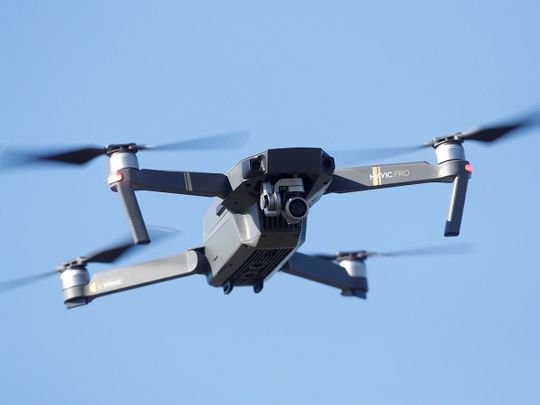
Growing up, I followed my parents all over the world in their international careers as medical doctors. I saw places filled with challenges, I saw places filled with opportunities. Often these places were far apart and not connected. In the 1990s, where you lived determined your opportunities for health care, education and many other fundamental human rights. Finishing college 20 years later, I realised that many of these fundamental challenges remained, but with today’s technology, there is scope to tackle these challenges in a different and better way.
Around this time, a video of the first pizza delivery by drone was circulating on the internet and I was flying drones myself for fun to capture beautiful photos. I was sitting on an air plane on my way from Zambia back to Sweden and realised that surely these drones could be used for more important things, like delivering medical supplies to hard-to-reach areas or capture real-time images from natural disasters to guide emergency teams on the ground. On that air plane napkin the first business plan for GLOBHE was drafted and the Good Drone Revolution was born.
Today, we are using drones as tools to solve some of the world’s most pressing challenges, while improving our client operations at the same time. Our clients range from the United Nations to some of the most notable corporations in the world. We have built a global partner network working with drone pilots all over the world to utilise the fact that thousands of drones are flying around in our skies every day. Never before have we had access to so much data. Never before have we had access to feasible sky delivery when roads are not an option. We are constantly innovating on the huge potential of this momentum to create solutions for people and the planet, when and where they really matter. We transport medical cargo to hard-to-reach places in minutes, instead of hours, and connect drones to artificial intelligence (AI) to faster analyse drone photos from natural disasters to better respond to a current crisis and to prevent one tomorrow.
Every year, 218 million people are affected by natural disasters. Every year, natural disasters cost more than $170 billion (Dh625.26 billion). Fast and accurate information is needed to save lives and minimise damages. And every year, 11 million children die, mainly from preventable causes. Failure to reach patients in time with medical supplies such as vaccines, antibiotics and micronutrient supplementation result in millions of preventable deaths each year. Preventable deaths cause $6 trillion in lost economic welfare in low and middle-income countries every year.
Existing solutions are many times too slow and too costly. Medical supplies often take too long to transport via roads and end up being costly. When natural disasters strike, emergency teams on the ground struggle to get an overview of the situation with satellite images lagging in time and helicopters or air planes being too expensive to be pressed into service. Drones have the potential to solve these problems since they can reduce transportation times from hours to minutes, reach places that are otherwise impossible to get to and quickly gather large amount of image-based data. This means drones can save lives, time and money.
We don’t make drones, we make drones work, when and where they are really needed. We are on a mission to improve 218 million lives every year by bringing to the world feasible drone services that make a difference. We have merged already existing technology, applied it in a new way, and made developments were needed. Technology in itself is never good nor bad, it’s what you do with it that makes the difference. And we are just at the beginning of what’s possible!
Helena Samsioe is CEO and founder of GLOBHE.







